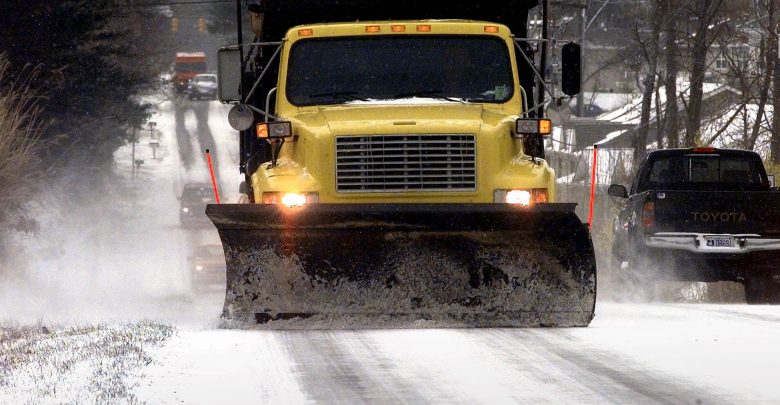Why that KDOT plow truck is not going faster?

If you are a motorist wanting to pass a KDOT truck plowing snow or putting down salt or brine to fight ice, you might not realize why it is moving so slowly.
It comes down to physics and performance.
Fact, the physics: A KDOT plow truck weighs around 26,300 pounds – and that’s unloaded – while the average vehicle weighs about 4,000 pounds.
The KDOT operator is trying to keep all that weight under control in slippery conditions while pushing snow with a plow in front and maybe a wing plow on the side. That’s a lot of force exerting from different directions to keep under control.
So the operating speed for the plow truck in those conditions is well under normal highway speeds — and may be as low as 10 mph when a blizzard cuts visibility. Just because the truck is so heavy doesn’t mean it won’t lose control on ice or packed snow.
One reason KDOT wants motorists to keep a distance behind snow-and-ice treatment trucks is this: beet juice and brine.
KDOT sometimes uses 10% beet juice with brine. The beet juice helps brine stick to pavement so the brine can melt ice or prevent it from forming, especially on elevated or exposed areas prone to freezing.
The beet-brine mix also can spray back on vehicles, especially if they are close enough to the KDOT truck applying the mix. It’s why KDOT recommends that motorists stay back 100 feet if possible.
District Five Engineer Brent Terstriep explains: “Depending on the storm, we may be pre-treating the entire road section, or we may only treat structures, like culverts or bridges. When we spot treat, especially over a culvert, that is not extremely apparent to the motorist – that they are crossing a structure. They may get a surprise when the liquid is turned on.”
In addition, if the truck goes much over 30 mph when dropping salt, much of it can bounce off the roadway.
This is why KDOT asks the public to please be patient and keep a distance behind KDOT plow trucks, and, if possible, wait until the plow truck turns around before passing.
If you pass, please do so carefully – and remember that you might not see a wing plow jutting out 7 feet from the side of the plow truck because of blowing snow or limited visibility.
“The most important thing to us is that everyone gets home safely — the traveling public and our people,” said KDOT Superintendent David Lechner. “So we ask that you be alert and understand the speeds at which we have to work.”



